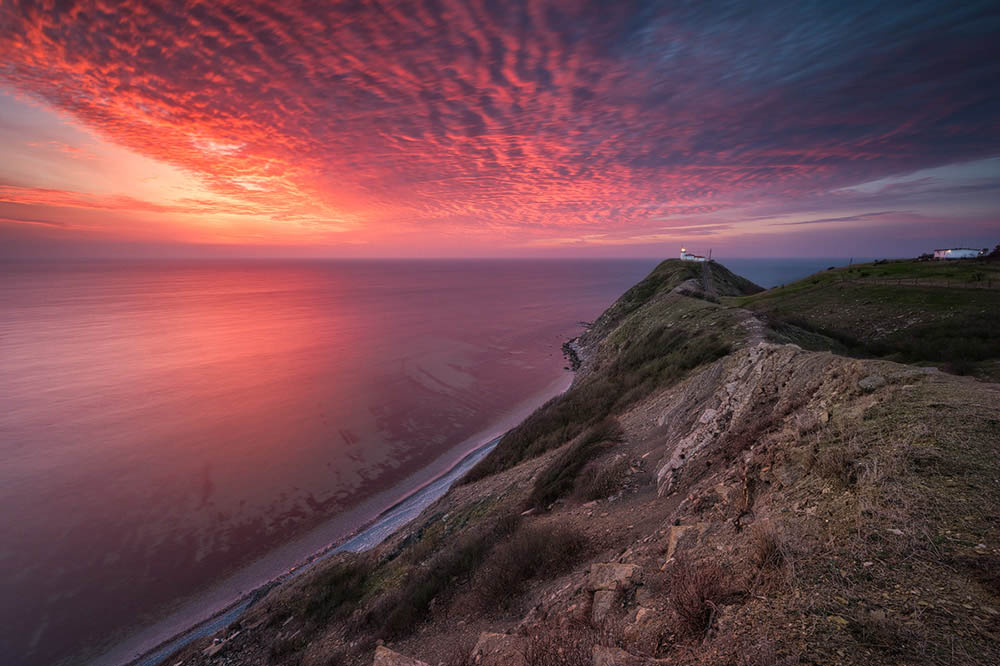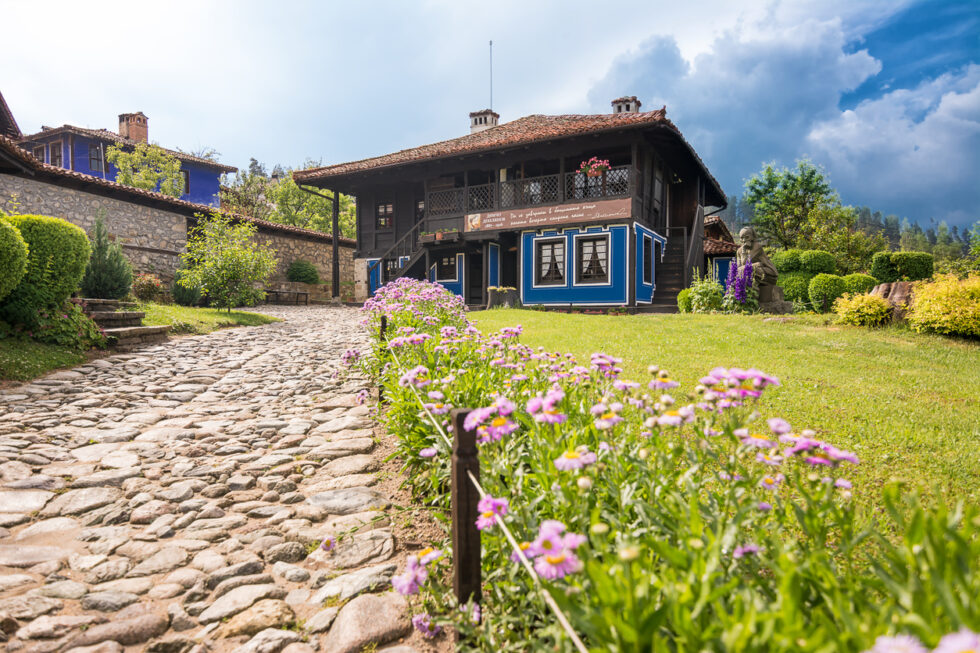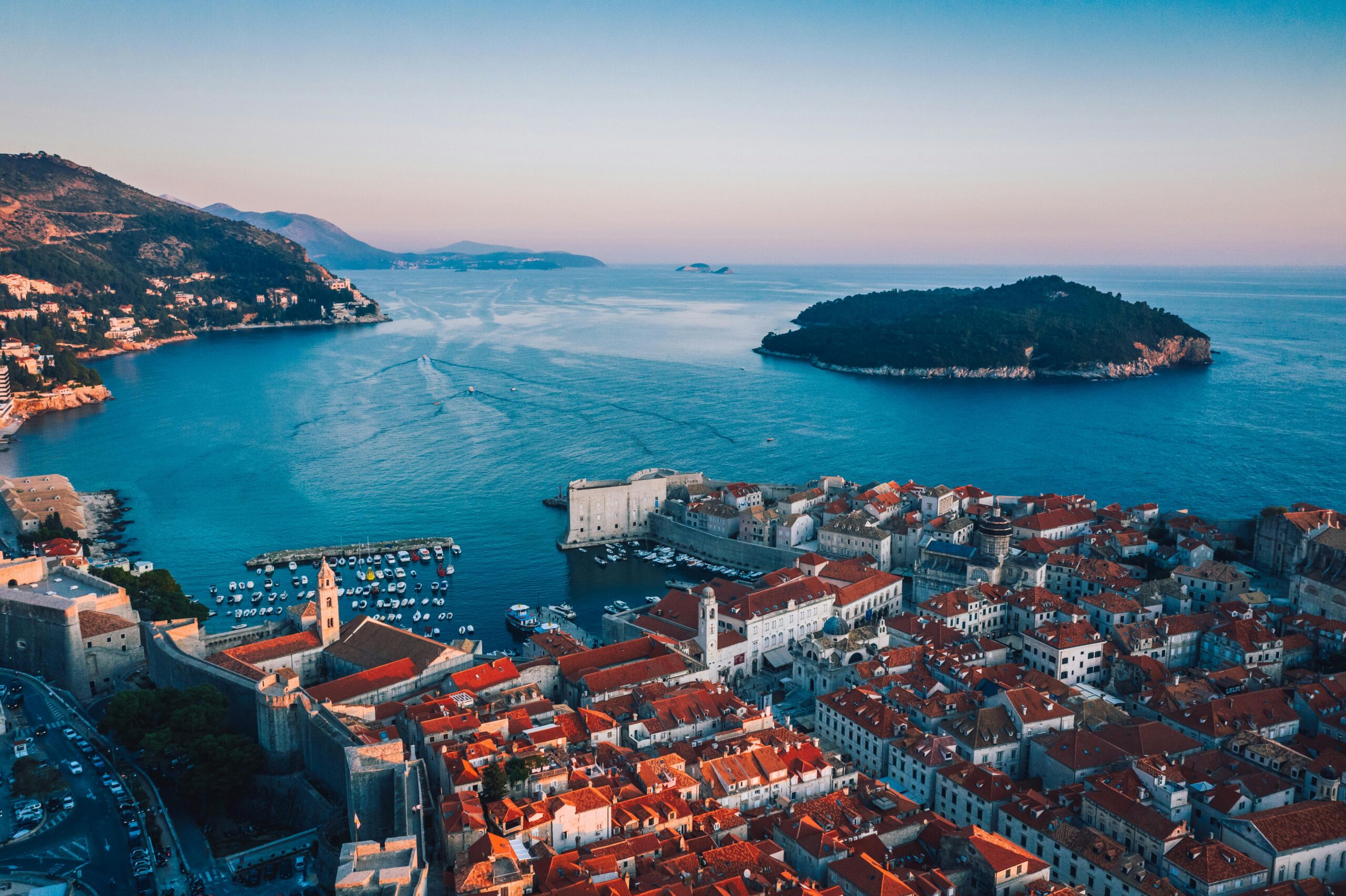Discovering The Black Sea’s Hidden Gems: Untouched Beaches, Enchanting Old Towns & UNESCO Treasures
The Bulgarian Black Sea coast stretches over 370 km, offering a tapestry of secluded coves, ancient fortresses, and verdant nature reserves. Beyond the popular resorts lie secret beaches, rugged capes, and centuries-old towns that beckon travelers seeking authentic experiences. In this guide, we’ll unveil the magic of Veleka, Irakli, and Silistar beaches; explore the dramatic northern capes of Kaliakra, Emine, and Shabla; and wander through UNESCO-listed Nessebar and other historic settlements. We’ll also suggest road-trip itineraries and curated tours to help you immerse yourself in the Black Sea’s lesser-known wonders.
1. Secluded South Coast Beaches
Veleka Beach: Where River Meets Sea
Nestled at the mouth of the Veleka River, Veleka Beach is a narrow stretch of soft sand where a tranquil lagoon backs onto the open Black Sea. Located just north of Sinemorets village, this beach is part of the Strandzha Nature Park and is characterized by its ever-changing shoreline—as the river reshapes the sands each year, no two visits are exactly alike. Veleka’s emerald waters and dense forest backdrop create a serene atmosphere, perfect for kayaking along the river’s estuary or simply sunbathing in almost total privacy.

- Getting There: From Burgas, drive southeast along Road 99 toward Rezovo; turn off at Sinemorets and follow local signage to Veleka.
- Highlights:
- Kayaking & Riverboat Tours: Paddle upstream on the Veleka River, where forested banks hide diverse birdlife.
- Strandzha Nature Park Hikes: Trailheads near the beach lead into ancient beech and oak forests.
- Local Cuisine: Nearby Sinemorets offers rustic taverns serving fresh river trout and Black Sea prawn specialties.
Irakli Beach: Wild and Untamed
Tucked between the villages of Emona and Obzor, Irakli Beach is often hailed as “Bulgaria’s last wild coast.” Spanning approximately 3.5 km and framed by dense woodlands, its golden sands and crystalline waters are largely free from commercial development. As part of a protected Natura 2000 site, Irakli attracts nature enthusiasts, birdwatchers, and nudists (in its designated zones), ensuring a laid-back, back-to-basics beach experience.

- Getting There: From Nessebar, follow Road 9 to Obzor, then branch onto the local road toward Emona; a short dirt track leads directly to Irakli’s parking area.
- Highlights:
- Protected Flora & Fauna: The adjacent Irakli protected area hosts rare species documented in Bulgaria’s Red Book.
- Sunset Photography: The unobstructed western view makes Irakli an ideal spot for golden-hour shots.
- Camping & Stargazing: Basic facilities near the northern end allow overnight stays under the open sky.
Silistar Beach: Borderland Beauty
Situated just 5 km north of the Turkish border, Silistar Beach occupies a remote cove within Strandzha Nature Park. Its crescent of soft sand is flanked by rocky outcrops and shaded by ancient Strandzha oak forests. Since Silistar is a strictly protected area, no permanent structures disrupt the landscape—camping is allowed in designated spots only, and visitors must arrive by car or on foot via a dirt track.

- Getting There: From Burgas Airport, head south along the coastal road (Road 99) toward Ahtopol. Turn off near Rezovo village onto the unpaved access road; allow 1.5 hours for the journey.
- Highlights:
- Sea Turtle Nesting Site: Keep an eye out for loggerhead sea turtles (Caretta caretta) during late summer.
- Forest-Sea Contrast: The juxtaposition of Strandzha’s woodland edge against the sandy bay offers rare biodiversity.
- Backcountry Tours: Join a guided hike from Sinemorets through the Veleka estuary and on to Silistar for a full-day immersion.
2. Dramatic Northern Capes & Coastal Vistas
Cape Kaliakra: Cliffs of Legend
On Bulgaria’s northeastern shore, Cape Kaliakra juts out as a narrow, 2 km-long peninsula crowned by 70 m cliffs that drop precipitously into the Black Sea. This nature reserve sits on Via Pontica, a major bird-migration corridor, and is home to rare raptors, cormorants, and dolphins offshore. Atop the headland lie the ruins of a 14th-century fortress, where local legends tell of forty Bulgarian maidens leaping into the sea to escape Ottoman capture.

- Getting There: From Varna, take Road 9 north toward Kavarna. The cape is signposted approximately 12 km east of Kavarna.
- Highlights:
- Birdwatching: Spring and autumn migrations bring flocks of storks, herons, and falcons.
- Underwater Caves & Bolata Cove: Snorkelers can explore submerged caverns at Bolata Cove, a sheltered inlet just north of Kaliakra.
- Fortress & Lighthouse Ruins: Wander the ramparts of the medieval citadel and spot remnants of Dobrotitsa’s 14th-century water mains.
Cape Emine: Where Mountains Meet the Sea
Halfway down Bulgaria’s coastline stands Cape Emine, the point where the Balkan Mountains (Stara Planina) dramatically plunge into the Black Sea. A 60 m-high cliff forbids easy access, but a small parking area and trail lead visitors to 14th-century Emona fortress ruins and a lonely lighthouse. Emine marks the terminus of the renowned Kom-Emine hiking trail (E3), and its windswept promontory is known as Bulgaria’s stormiest cape.

- Getting There: From Obzor, follow Road 9 south for 14 km; look for signs to Cape Emine off the main road.
- Highlights:
- Kom-Emine Trek: Hikers often conclude (or begin) the 650 km Stara Planina traverse here.
- Monastery Ruins & Lighthouse: Remnants of a medieval monastery and a functioning light tower overlook sheer drops.
- Panoramic Views: Stormy seas and rugged terrain combine for photography sessions.
Cape Shabla: Easternmost Extremity
At Bulgaria’s northeasternmost point, Cape Shabla projects into the Black Sea as a protected nature zone renowned for seawatching. The 32 m-tall lighthouse—Bulgaria’s oldest and tallest—has guided sailors since the 19th century. Beyond the cliff’s edge lie salt marshes and lagoons (Shablensko and Durankulak), creating habitats for rare waders and waterfowl. Access involves a short drive from the town of Shabla, with footpaths leading to coastal overlooks.
- Getting There: From Dobrich, follow Road 2 east toward Shabla town; a local road leads north to the lighthouse.
- Highlights:
- Seabird Migration: Wintering and migrating populations of shearwaters and gulls swirl offshore.
- Salt-lagoon Ecosystems: Durankulak Lake’s island ruins and thermal muds at Shablenska Tuzla beckon nature lovers.
- Fishing Village of Karia: Explore the small harbor and wooden dwellings of this traditional coastal settlement.
3. Old Towns & UNESCO Heritage
Nessebar: The Ancient Pearl of the Black Sea
Declared a UNESCO World Heritage Site in 1983, Nessebar perches on a rocky peninsula connected to the mainland by a narrow isthmus. With over 3,000 years of continuous habitation—first by Thracians, then as a Greek colony (Menebria), and later a Byzantine and Ottoman stronghold—the “Old Town” boasts layers of cultural strata. Cobblestone streets wind between wooden-roofed Renaissance houses, Byzantine church ruins, and well-preserved medieval fortress walls. Key monuments include the St. Stefan Church (13th century), the Church of Christ Pantokrator (13th century), and the Thracian-Greek acropolis remnants.
- Getting There: From Burgas, drive north on Road 9 toward Varna; turn off at Nessebar signage about 35 km from Burgas. A paid parking lot sits adjacent to the ancient quarter’s southern gate.
- Highlights:
- Archaeological Museums: Discover artifacts tracing the town’s evolution from antiquity to Ottoman rule.
- Iconic Churches: Visit the Church of St. John Aliturgetos (14th c.), notable for its rose-colored brickwork, and the partially ruined 11th c. Church of St. Paraskeva.
- Sunset Promenade: The western wall offers dreamy twilight views over the Golyi grad (“Naked Island”)—a small islet once fortified in antiquity.
Sozopol: Rustic Seaside Charm
Only about 35 km south of Burgas, Sozopol rivals Nessebar for historical depth. Founded in the 7th century BC by Greek colonists (known then as Antheia, later Apollonia), it retains narrow alleys, wooden houses with overhanging eaves, and two important medieval churches: St. Ivan (11th c.) and St. George (17th c., now a museum). Unlike Nessebar’s island feel, Sozopol straddles two peninsulas—“Strelna” and “Gradina”—each fringed by sandy bays such as Harmani. Summer brings the Apollonia Arts Festival, showcasing theater, dance, and film on open-air stages.
- Getting There: Follow Road 9 south from Burgas; Sozopol is signposted roughly 34 km away.
- Highlights:
- Apollonia Festival (mid-September): Experience international film screenings and classical concerts in historic courtyards.
- Rozovo (Roses) Bay: Hike between Kaliakra parklands and Sozopol’s northern beaches.
- Old Sozopol Archaeological Reserve: See traces of late Bronze Age settlements and Hellenistic fortifications.
Balchik & Cape Kaliakra Day Trip
Combine a visit to Cape Kaliakra with Balchik’s Royal Botanical Garden. Balchik’s former palace (the “Quiet Nest”) was a summer residence of Romania’s Queen Marie and is surrounded by terraced gardens featuring over 3,000 plant species. From Balchik, continue north to Kaliakra—this loop demonstrates how history, horticulture, and coastal panoramas can be paired in a single day.
- Suggested Timing: Depart Balchik by 10:00 AM, stroll the garden until 12:30 PM, then drive 25 km to Kaliakra for a late-afternoon birdwatching session.
4. Sample Road Trip Itineraries & Tours
Itinerary A: “Strandzha to Rezovo” (3 Days)
- Day 1 – Burgas → Sinemorets → Veleka → Silistar
- Morning: Pick up rental car at Burgas Airport. Head south to Sinemorets; kayak the Veleka estuary.
- Afternoon: Picnic on Veleka Beach; hike the coastal trail (about 8 km round-trip) into Strandzha forests.
- Evening: Camp (or lodge) near Sinemorets. Dinner of fresh trout by the river.
- Day 2 – Silistar → Ahtopol → Rezovo
- Morning: Early drive to Silistar; sunrise beach walk and sea turtle spotting.
- Late Morning: Continue south to Ahtopol; explore the old quarter and Byzantine church ruins.
- Afternoon: Reach Rezovo at the Turkish border; crosswalk views and local osprey nesting platforms.
- Evening: Overnight in Ahtopol guesthouse.
- Day 3 – Ahtopol → Strandzha Park Hike → Burgas
- Morning: Short hike on marked trails inside Strandzha Nature Park (e.g., Uzunbodzhak Reserve).
- Afternoon: Return north to Burgas; detour via Kiten’s tranquil beaches if time allows.
Itinerary B: “Capes & Culture” North Loop (4 Days)
- Day 1 – Varna → Balchik → Kaliakra → Kavarna
- Morning: Depart Varna to Balchik; stroll Palace & Botanical Garden.
- Afternoon: Drive 25 km to Cape Kaliakra for fortress ruins and seabird watching.
- Evening: Arrive in Kavarna; sample local seafood taverns.
- Day 2 – Kavarna → Shabla → Durankulak Lake → Silistra (Romania optional)
- Morning: Head east to Cape Shabla; visit the lighthouse and bird-ringing station.
- Midday: Stop by Durankulak Lake’s ancient Thracian settlement island; try the saline mud baths at Shablenska Tuzla.
- Afternoon/Evening: Continue to Silistra for a sunset cruise on the Danube (optional with Romania border crossing).
- Day 3 – Kavarna → Cape Emine → Old Town Sozopol
- Morning: Drive south via Road 9; visit Cape Emine’s lighthouse and take the short coastal cliff walk.
- Afternoon: Reach Sozopol; explore the Old Town’s wooden houses, harbor, and Apollonia museum.
- Evening: Stay in a restored guesthouse within the old quarter.
- Day 4 – Sozopol → Nessebar → Burgas
- Morning: Scenic coastal drive to Nessebar; self-guided walking tour of UNESCO-listed sites.
- Afternoon: Lunch overlooking the ancient city walls; final stop at a winery near Pomorie for local rose wine tastings.
- Evening: Return to Burgas or Varna.
5. Practical Tips & Seasonal Notes
- Best Seasons:
- Late May–June: Wildflower bloom in Strandzha; fewer crowds on beaches.
- July–August: Peak swimming conditions but some remote beaches (Irakli, Silistar) may become busier on weekends.
- September: Ideal for hiking (cooler weather) and heritage tours; Apollonia Festival in Sozopol.
- October: Bird migration at northern capes (Via Pontica) is at its peak.
- Accommodation:
- Sinemorets/Ahtopol: Guesthouses and small beach cabins near Veleka and Silistar.
- Obzor/Emona: Mid-range hotels adjacent to Irakli’s northern end.
- Kavarna/Balchik: Boutique guesthouses with sea-view terraces.
- Nessebar/Sozopol: Historic guesthouses within old quarters, many dating to the 19th century.
- Transportation:
- Car Rental: Recommended for full flexibility—especially on the south coast where public transport is sparse.
- Public Buses: Regular lines connect Burgas, Varna, Nessebar, Sozopol, and Obzor; less frequent service to Sinemorets, Rezovo, and Shabla.
- Guided Minivan Tours: Ideal for day trips if you prefer not to drive; private guides often include multilingual narration.
- What to Pack:
- Hiking Boots: Strandzha’s trails can be steep and uneven.
- Swimwear & Snorkel Gear: Calative coves like Bolata and Silistar boast clear waters.
- Binoculars: For birdwatching at Kaliakra and Shabla.
- Reusable Water Bottle: Many wild beaches have no vendors; carry enough water.
7. Final Thoughts
The hidden corners of Bulgaria’s Black Sea coast reward those willing to venture beyond the crowded promenades of Sunny Beach or Golden Sands. From the living estuary of Veleka to the untamed sands of Irakli, the remote bay of Silistar, and the windswept capes of the north, each locale unveils a chapter in a landscape where nature and history intertwine. Wander the cobblestones of UNESCO-listed Nessebar or Sozopol’s wooden-house maze, stand atop Kaliakra’s red-rock cliffs as swallows wheel beneath you, and feel the ancient pulse in every stone and sand grain. Whether you seek solitude on a wild shore, the whispers of medieval citadels, or the migratory spectacle of Via Pontica, the Black Sea’s hidden gems await your exploration.
Happy travels and safe journeys!


